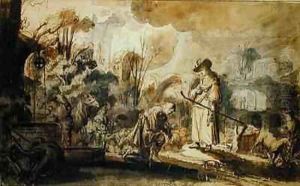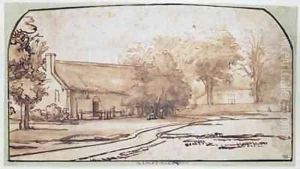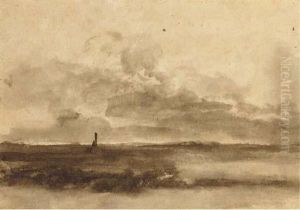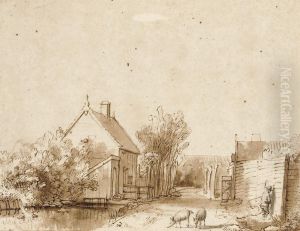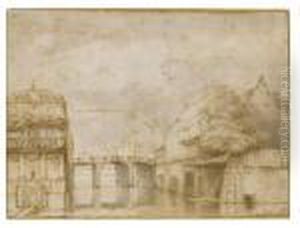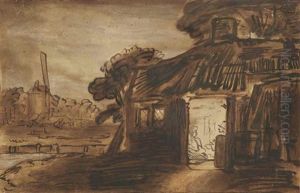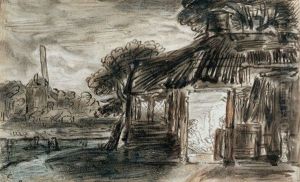Abraham Furnerius Paintings
Abraham Furnerius, also known as Abraham van Furnerius, was a Dutch landscape painter born in 1628 in Rotterdam, Netherlands. He was a pupil of Rembrandt van Rijn, one of the greatest artists of the Dutch Golden Age. Despite the prominence of his teacher, little is known about the life of Furnerius, and only a few of his works have survived to the present day.
Furnerius was active during a period when landscape painting was becoming increasingly popular in the Dutch Republic. His works, though not as well-known or numerous as those of his contemporaries, exhibit a keen observation of nature and a delicate treatment of light and atmosphere, qualities that reflect the influence of Rembrandt’s teaching. His paintings often depict rural scenes with a high degree of detail and a soft, harmonious palette.
Unfortunately, Furnerius' career was brief; he died young at the age of 26 in 1654. The exact circumstances of his death are not well documented, which is the case with many aspects of his life. As a result of his early death and the limited number of works he produced, his name did not achieve the same level of recognition as many of his peers. Despite this, his contributions to Dutch landscape painting are appreciated by art historians and collectors who recognize the quality of his surviving pieces.
Because Abraham Furnerius lived and worked during the height of the Dutch Golden Age, his works are considered part of this rich period in art history. His landscapes can be seen as a testament to the era's fascination with the natural world and the development of landscape painting as a respected genre. Today, Furnerius's paintings are held in various art collections and continue to be studied for their artistic merit and historical significance.
